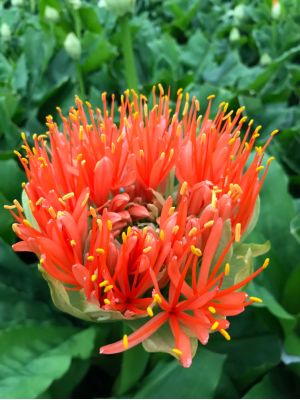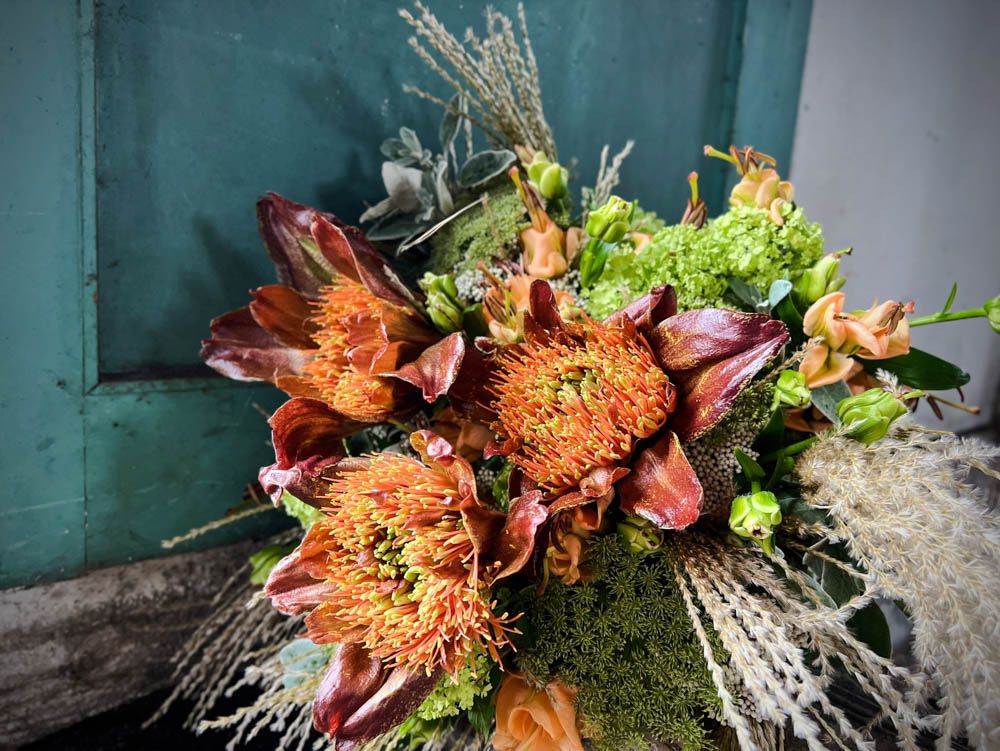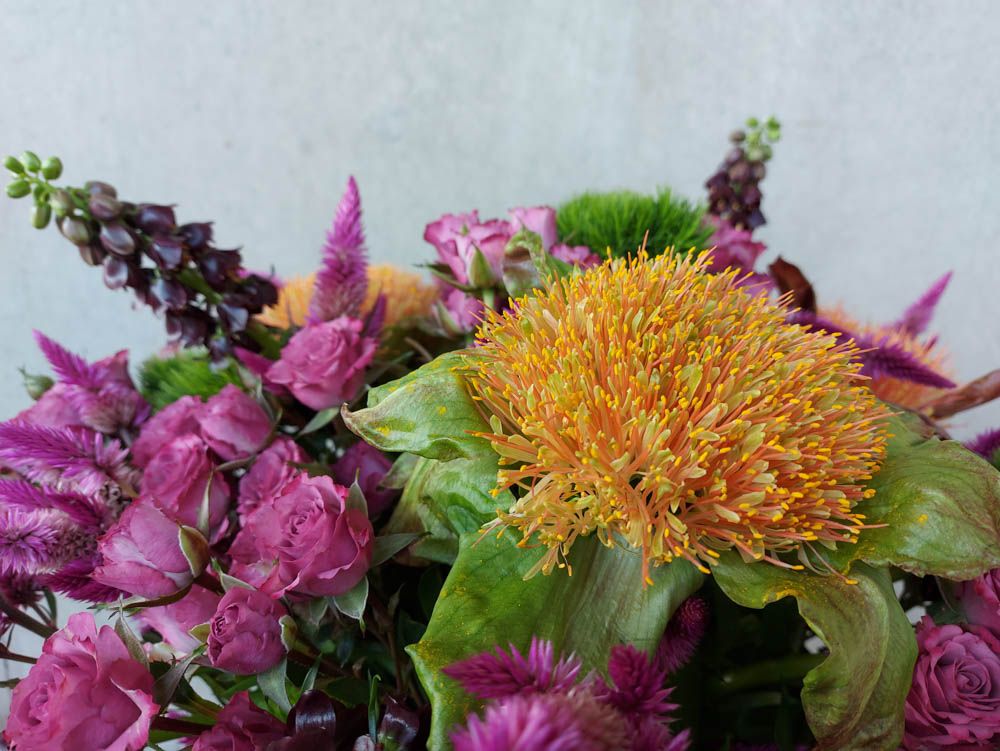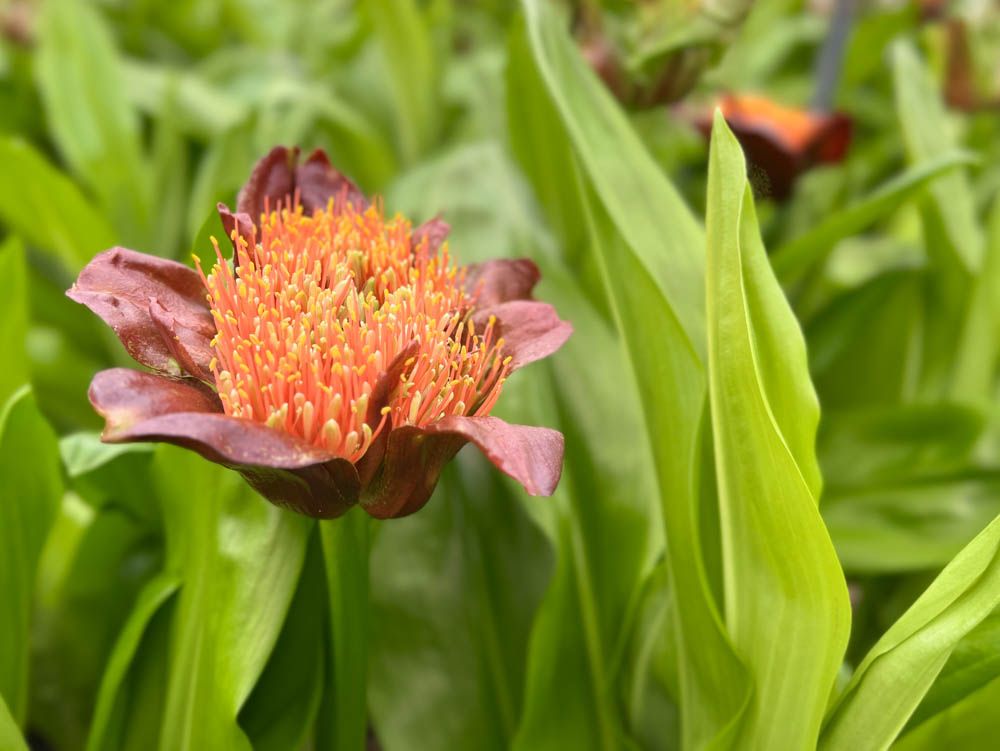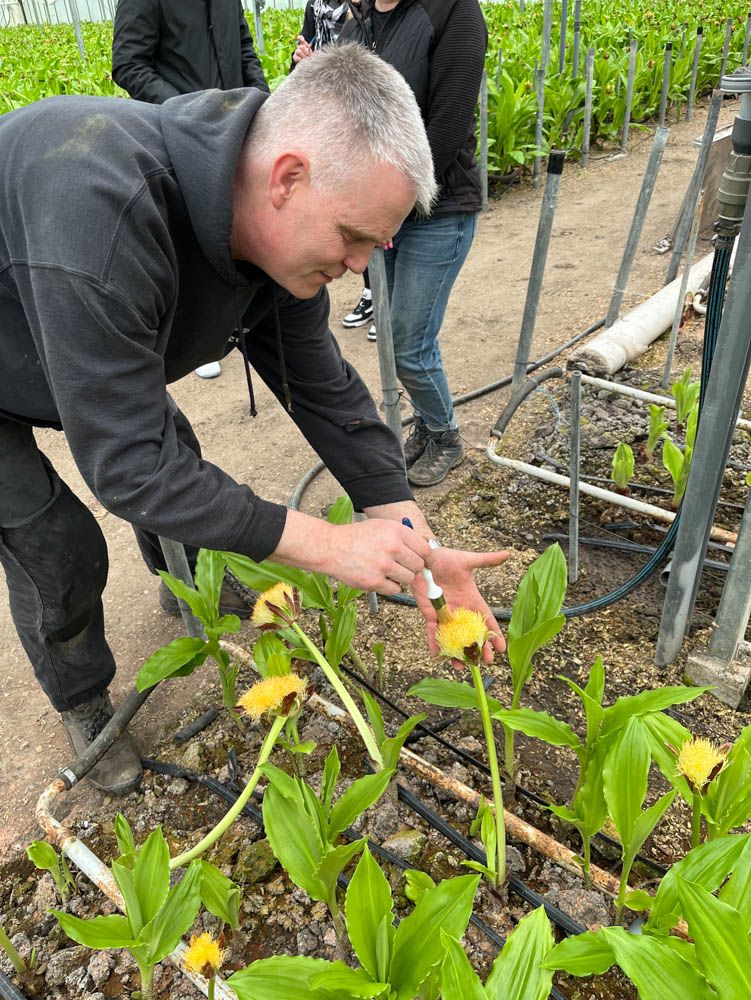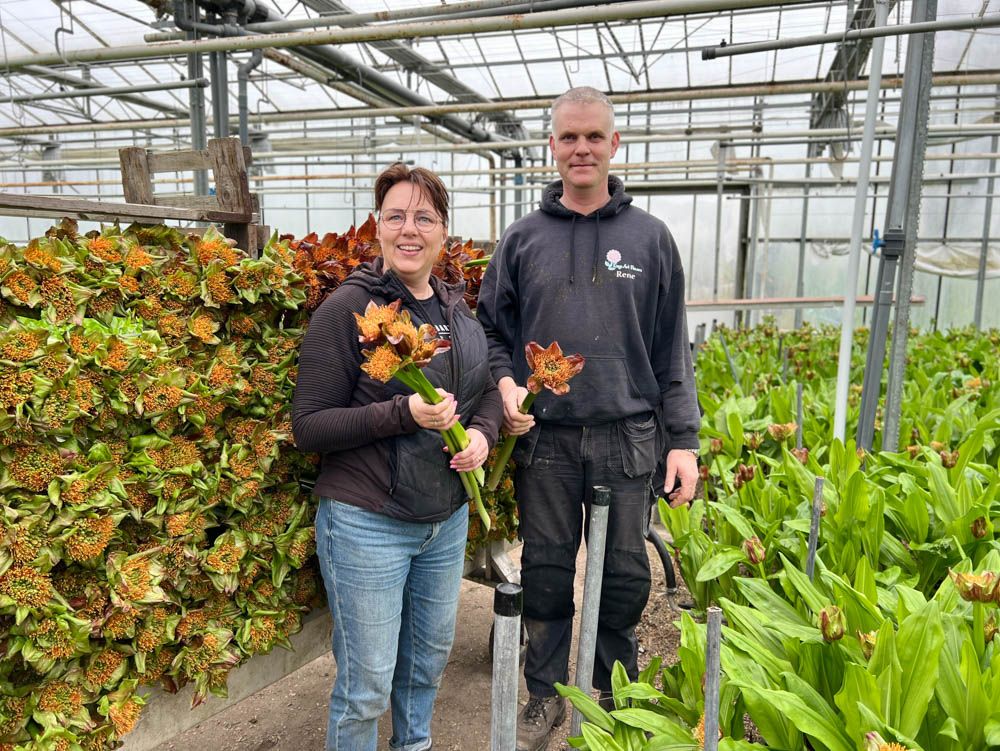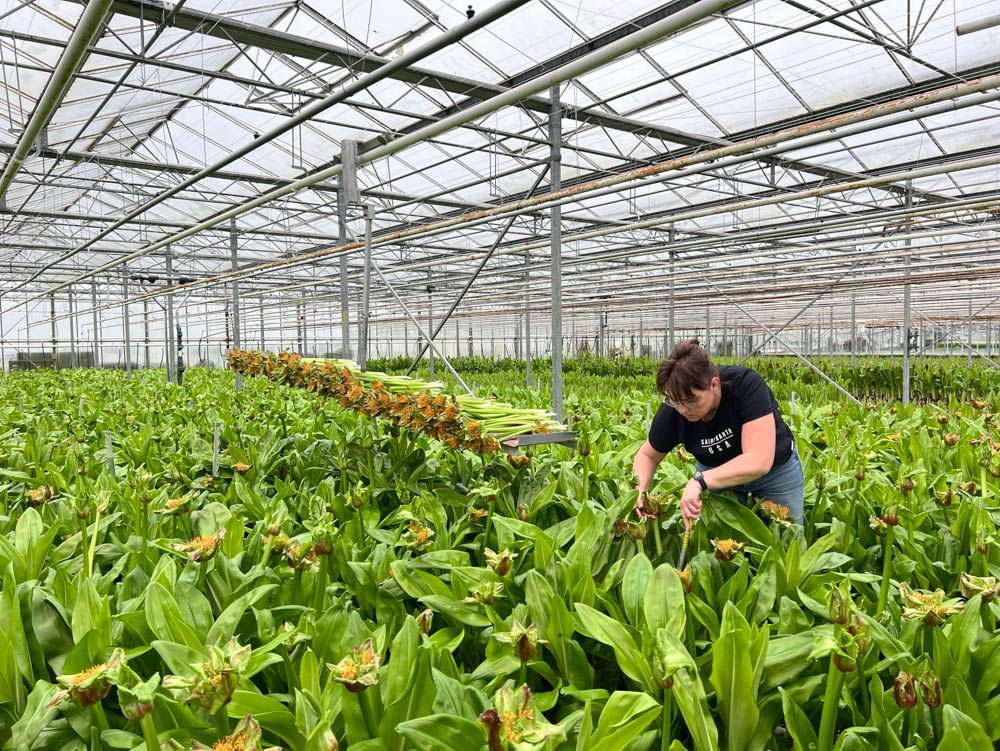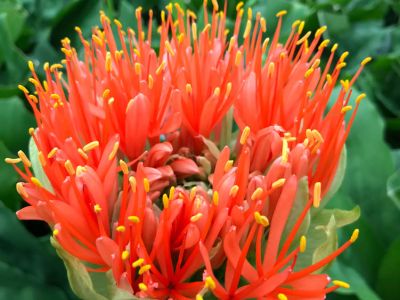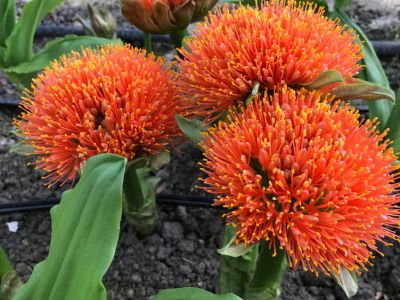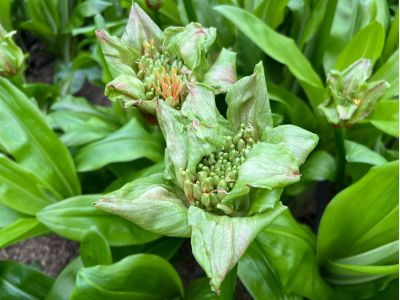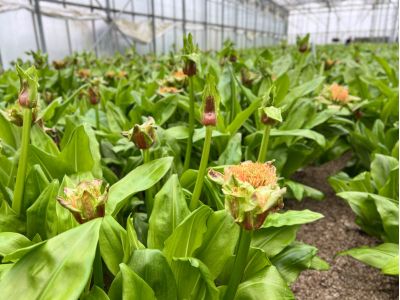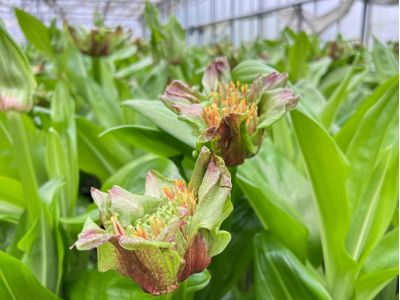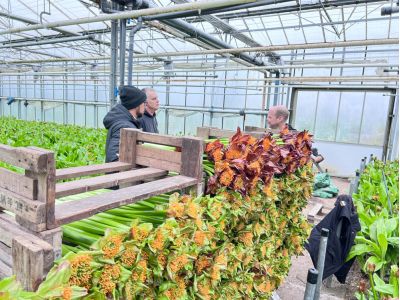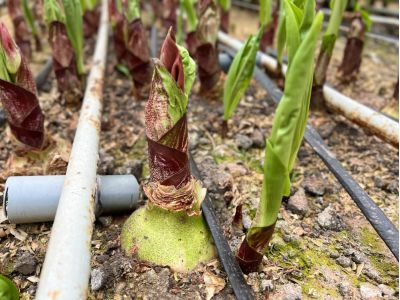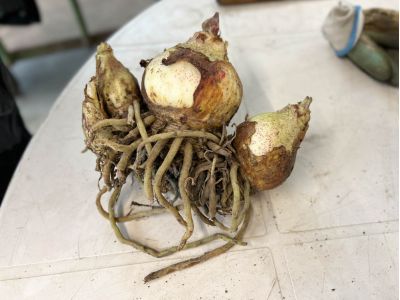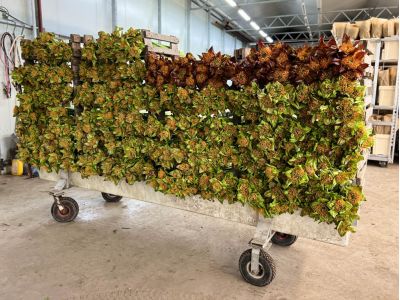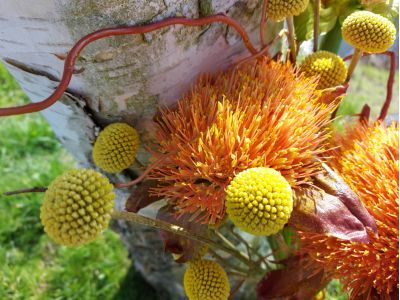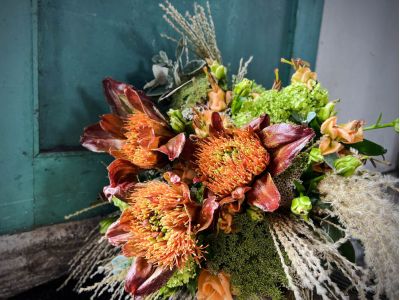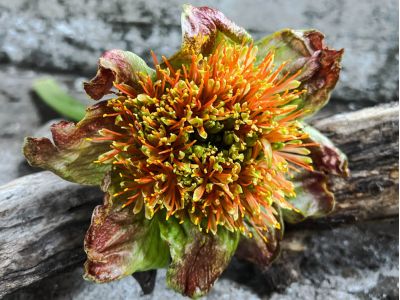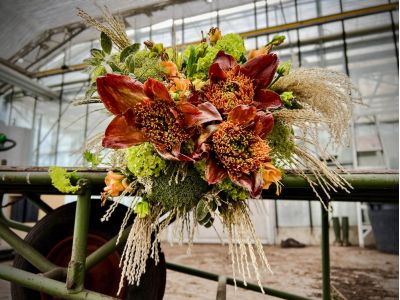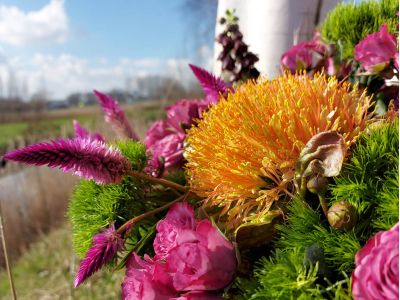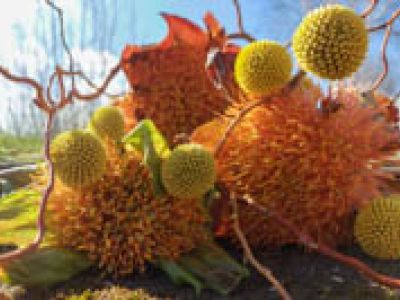Scadoxus
In the spotlights
As we stepped into the greenhouse at Kings Art Flowers, we were overwhelmed by a sense of exclusivity and admiration. René and Sylvia Koning are the proud growers of Scadoxus, also known as the 'powder brush' in Dutch. Scadoxus is an extremely exclusive flower, not widely known to everyone. René and Sylvia took us on a journey of discovery through their greenhouse.
Kings Art Flowers
Kings Art Flowers has a rich history dating back to 1954 when René's father began with fruit cultivation, later transitioning to vegetables, and eventually growing Freesias. Twenty years ago, René saw an opportunity to take over the cultivation of Scadoxus from a grower who wanted to stop. It was love at first sight. This beautiful flower, so exclusive and unique, was exactly what René wanted to cultivate.
Scadoxus
Scadoxus originates from Southeast Africa, where it grows in the wild. René and Sylvia cultivate various types of Scadoxus, including ‘Blitz’, ‘Torch’, ‘King of Orange’, and ‘Flame’. The Scadoxus growing season runs from January to June.
The cultivation of Scadoxus is extremely complicated. From propagating bulbs to harvesting flowers, each step requires time and expertise. The process begins with propagating bulbs from scales, which takes five years before the first flowers can be harvested. Each bulb produces only one flower per season, with an average of 20% loss, making cultivation a costly affair. The entire cultivation process is done by hand; harvesting, sorting, as well as preparing the flowers for sale.
The leaf remains on the plant for as long as possible because the bulb draws energy from it to grow. About three months before the new bloom, the leaf is removed so that all energy goes to the flower. After four seasons, the bulbs are harvested, the roots removed, and the soil steamed. The bulbs are then cooked and prepared to be replanted.

Cultivation
Sustainability
The cultivation of Scadoxus faces its challenges, including the threat of bulb mites. René and Sylvia try to address this issue organically by using shell pulp as a natural remedy.
Sustainable heat is an important aspect of the nursery. An innovative system uses the fermentation of organic waste, producing methane, which is then burned by a CHP unit to generate heat and electricity. The heat is used to warm the greenhouse, while the electricity is fed back into the grid.
Care
Scadoxus, with its unique beauty and long flowering period, is a favorite for summer bouquets and vase arrangements. The ideal storage temperature in the logistics process is 7 degrees Celsius. Once on the vase, they bloom best at room temperature. Like most flowers, Scadoxus thrives best in a clean vase with flower food or a drop of chlorine to prevent bacterial growth in the vase. Removing faded flowers stimulates the growth of new flowers.
René and Sylvia radiate enthusiasm for their profession. They love the crop and embrace the challenges it brings. Seeing the crop change and the gratitude of a long vase life are just a few of the many aspects that make growing Scadoxus so special. With their unique product, they make a valuable contribution to the flower industry.
FloraPodium, 21 March 2024






